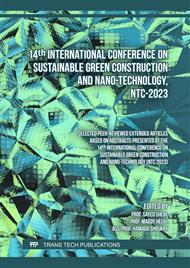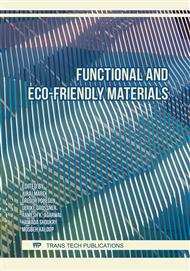p.77
p.83
p.93
p.101
p.109
p.117
p.129
p.145
p.157
Properties of Pervious Concrete Made with Ferrochrome Slag as a Coarse Aggregate
Abstract:
Ferrochrome slag (FCS) is produced during the production of ferrochrome alloy, which is an essential component of stainless steel. FCS has favorable physical and chemical properties for use as an aggregate in place of natural aggregate in the production of conventional and pervious concrete. Previous studies reported that the mechanical properties of concrete are enhanced when FCS is used in place of natural aggregates. This study evaluated the performance of pervious concrete containing FCS aggregates to replace the natural aggregates (NA) in various percentages (0%, 25%, 50%, 75% and 100% by weight). The effect of FCS replacement ratios on the mechanical properties (compressive strength, flexural strength, and split tensile strength), water permeability in terms of infiltration rate and density of the pervious concrete were determined. The results showed that the coefficient of water permeability increases with the increase of ferrochrome slag content. However, the compressive strength and density are reduced due to the increase of the porosity of the concrete. The optimum replacement percentage of natural aggregate with FCS aggregate was found to be 75%. The study concluded that it is possible to produce sustainable pervious concrete by using waste ferrochrome slag.
Info:
Periodical:
Pages:
109-115
Citation:
Online since:
May 2023
Authors:
Keywords:
Price:
Сopyright:
© 2023 Trans Tech Publications Ltd. All Rights Reserved
Share:
Citation:



